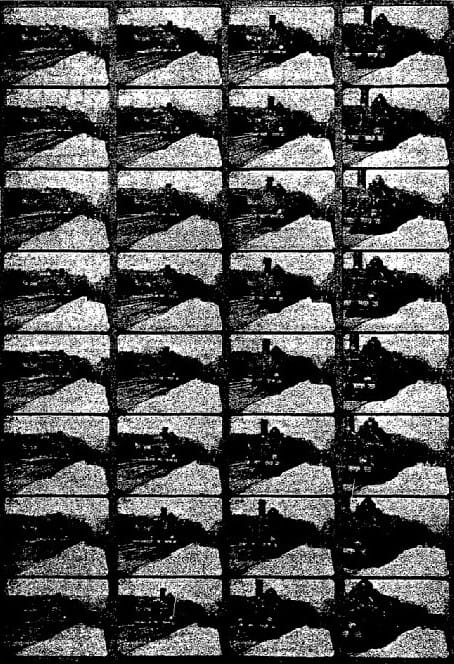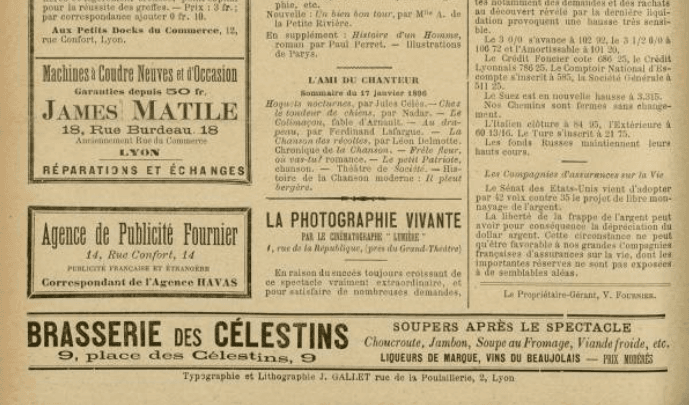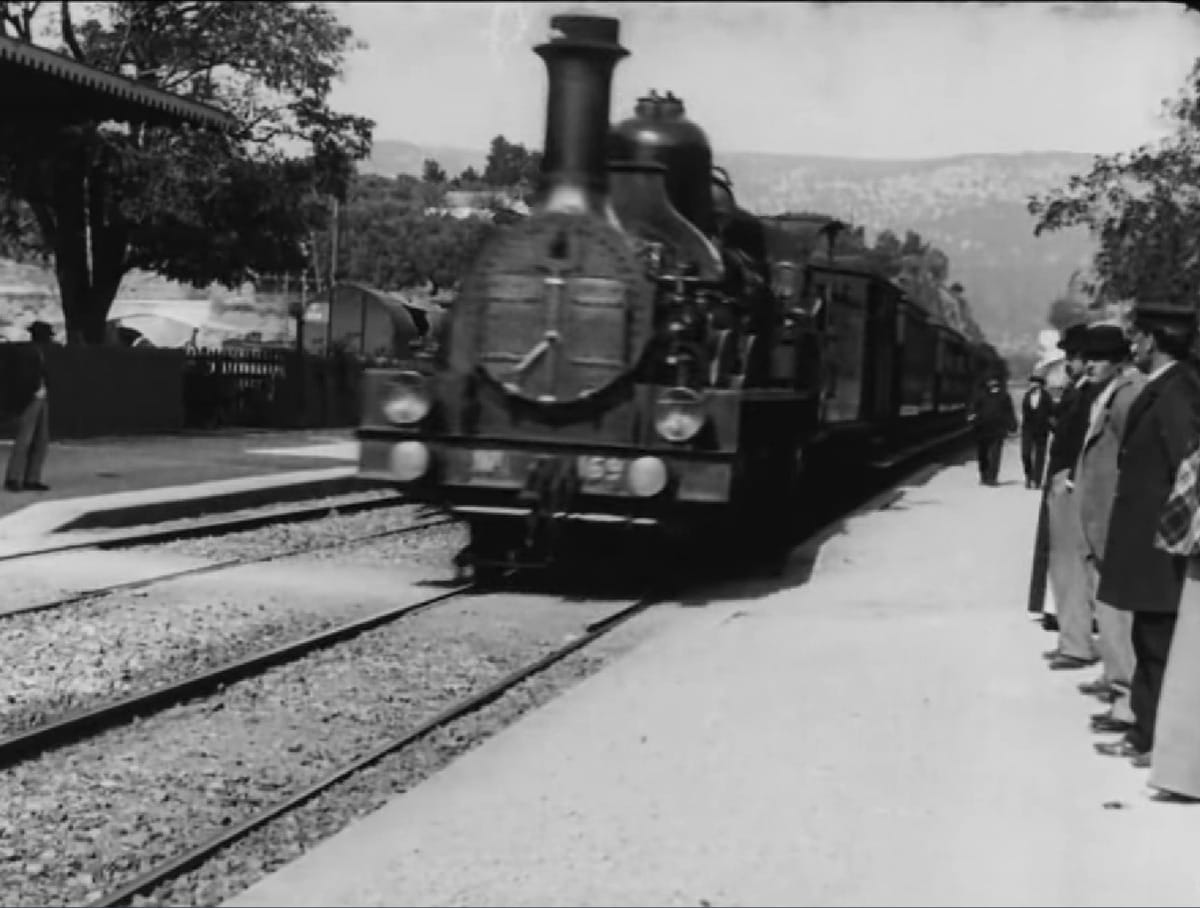In popular science articles about cinema, you can often find a statement that the demonstration of one of the first films in the history of cinema, “The Arrival of a Train at La Ciotat Station,” provoked panic in the auditorium. We decided to find out if this is actually true.
Mention of panic among viewers of the Lumiere brothers' film is often found on social networks: LiveJournal, "VKontakte", blogs on the platform "Zen" As stated, “the audience was so shocked by the verisimilitude of what was happening on the screen that panic began in the hall - the audience really thought that a huge train was about to jump out at them.” In the advertising publication "Kommersant Weekend"In 2003, the realism of the then-new Imax technology was compared to that screening of Arrival of a Train. Finally, this story is described on the website about the history of cinema and photography Cameralabs.
Information about the first years of the existence of cinema is rather fragmentary, and it is not always possible to reliably establish on what day, and sometimes even year, the premiere of a particular film took place. The famous “Arrival of a Train at La Ciotat Station” was no exception (distributors often shortened the title to “Arrival of a Train at the Station” or even to “Arrival of a Train”). The Lumiere brothers filmed the scene at the train station in the Provençal city of La Ciotat, 30 km east of Marseille, several times. Exists three versions "Train Arrivals", filmed on the same platform no later than the end of 1895.
The Arrival of a Train has been mentioned in newspaper publications since early 1896. The film was first shown to audiences in Lyon on January 25, 1896, on the occasion of the opening of the second hall of the Cinematograph in this city. The next day the newspaper Le Lyon Républicain wrote: “This is the most amazing sight we have ever witnessed. <…> This, of course, is just an illusion, but so full of amazing realism that it seems as if we are among the characters appearing on the screen.” And nothing about panic. The press did not mention any disturbances among the spectators.
There is not a word about this in the scientific journal La Science française, published in February 1896. This issue published two articles devoted to the invention of the Lumiere brothers. IN one of them talked about the impression that cinema makes on viewers, in second — about the technical side of “live photos”. For the latter, Auguste and Louis Lumiere provided footage (more precisely, photograms) just from a movie about a train.

In the Lyon weekly Le Passe-temps in issue for February 9 A small but effective ad entitled “Live Photography” was placed. “Due to the growing popularity of this truly amazing spectacle, in order to satisfy the demands of the public, the management made a decision: the sessions will now be daily, from 2 o’clock to midnight. On Sundays and holidays - from 10 a.m. to midnight. The entrance fee is 0.50 francs.”

This weekly magazine was dedicated to all kinds of social entertainment; in it one could find information about theater premieres and fashion exhibitions, and read the latest feuilletons. If there was a panic at the Cinématographe de Lyon, Le Passe-temps would definitely write about it. In the previous issue (for February 2) the editors only posted an article about the new entertainment, which will now be available in Lyon (the text, obviously, was written before the premiere).

Finally, in issue for February 16 The film “The Arrival of a Train at the Station” is mentioned for the first time: the film screening program is published in the magazine. And again, not a word about any emergency incidents.

The legend of the panic in the auditorium in detail sorted it out film historian Jean-Pierre Sirois-Traan. The word “fear” appeared the very next day after the premiere - in the newspaper Le Lyon Républicain. The film expert quotes: “It’s amazing with what amazing verisimilitude the locomotive arrives at the station, throwing out clouds of smoke. It moves along the rails at such a speed that you involuntarily instinctively move away from the iron colossus, for fear that it will crash into you. But there is nothing to be afraid of, the train stops, everyone gets off, the doors open, new passengers climb the steps of the cars at the signal from the station master.” Thus, the fear was most likely fleeting; no panic arose in the hall.
Another researcher, Martin Loiperdinger from the University of Trier, also didn't find it reliable evidence of the panic that occurred at the Cinématographe de Lyon in 1896. He reproaches his colleagues for endlessly reproducing the myth about the premiere of “The Arrival of a Train” and believes that the legend appeared at the beginning of the twentieth century. According to the German researcher, the reaction of the spectators was within the bounds of what was acceptable: most likely, many spectators simply leaned back a little in their seats when they saw the train. Loiperdinger points out that the train travels for only a few seconds and the viewer, after a moment, is already focused on the passengers waiting in line on the platform.
It is possible that the legend was formed under the influence of another film. In 1901, English director Robert William Paul made the short comedy "The Hillbilly and the Cinema." This film consists of short scenes depicting the peasant's reaction to various episodes from films already filmed by that time. In one of these scenes, a village simpleton runs away in fear from a train rushing off the screen.
Perhaps Maxim Gorky unwittingly had a hand in creating the legend. In the summer of 1896, the first films were shown in Russia. Gorky (under the pseudonym I. M. Pacatus) wrote about this full of drama essay for “Nizhny Novgorod List”: “And suddenly something clicks, everything disappears, and a railway train appears on the screen. He rushes like an arrow straight towards you - watch out! It seems that he is about to rush into the darkness in which you sit, and turn you into a torn bag of skin, full of crumpled meat and crushed bones, and destroy, turn into rubble and dust this hall and this building, where there is so much wine, women, music and vice. But if you read carefully, Gorky’s impressions of cinema are presented in a completely different context: he calls cinema the kingdom of shadows, contrasting the gray screen scenes of real life. But he also does not write anything about the panic in the hall and about the spectators running out in horror.
Thus, the sources do not confirm the widespread story of panic among audiences provoked by the film Arrival of a Train. The painting by the Lumiere brothers made a strong impression on the public, but there is no evidence that it forced those who came to the session to run out of the hall or otherwise hide from the locomotive “riding” at them.
Cover photo: still from the film “The Arrival of a Train at La Ciotat Station,” 1896
Most likely not true
- Myths about the Metro-Goldwyn-Mayer film studio's lion screensaver
- Is it true that the photo shows Alfred Hitchcock swimming in the Thames?
If you find a spelling or grammatical error, please let us know by highlighting the error text and clicking Ctrl+Enter.






